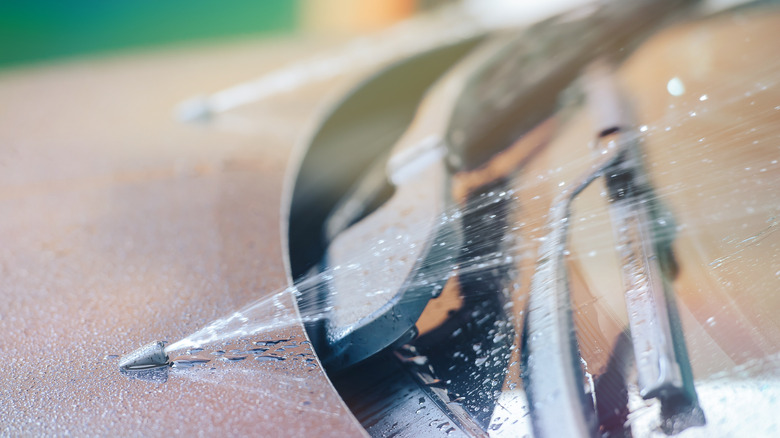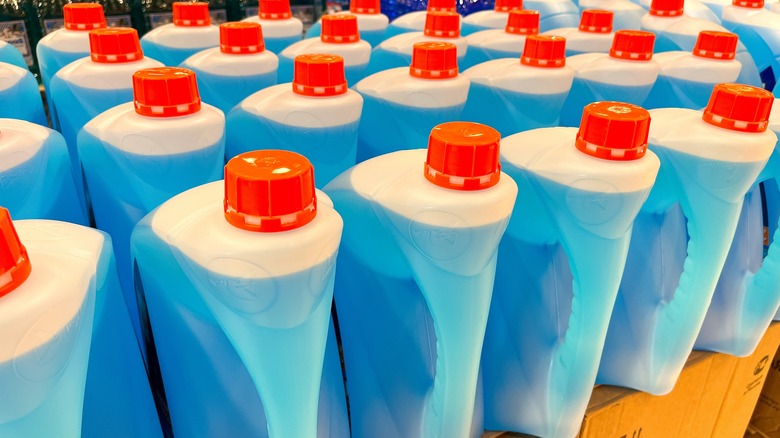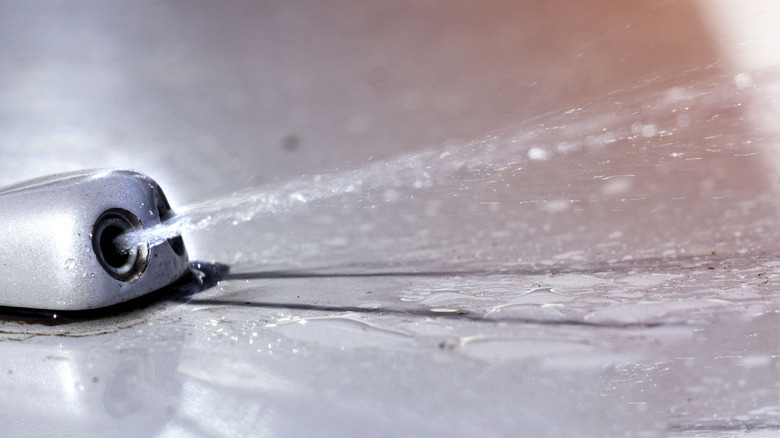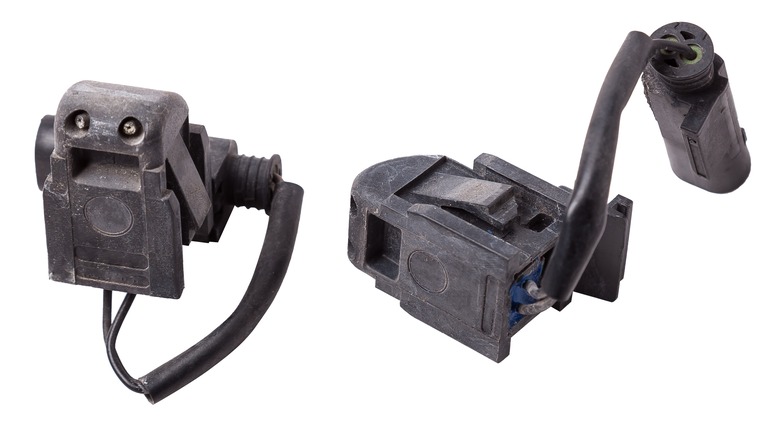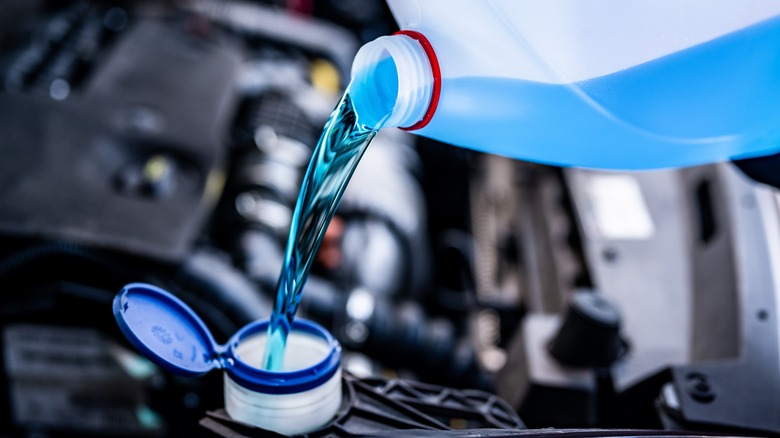Why Your Windshield Wiper Fluid Isn't Spraying (And How To Unclog It)
Your car's windshield wipers are quite possibly one of the most important components in your safe driving experience. Windshield wipers on their own aren't always enough to clear obstructive elements from your view. Sometimes, the assorted detritus of the road needs a little extra coaxing before your wipers can jostle it loose, and that's when you pull the lever to activate the wiper fluid jets. A quick spritz will usually put you right as rain, especially in the rain!
However, while you're out and about and need that quick spritz, sometimes the jets won't activate. Even if your wiper blades are newly-replaced and in perfect working order, you just can't seem to get the wiper fluid to come out. These mysterious occurrences could be due to a handful of different factors, though the most likely cause is a clog, either on the surface of the jet nozzle or deeper within. This can seriously endanger you while you're out on the road, and it needs to be remedied with the utmost urgency. Luckily, a wiper clog can be dealt with fairly easily with a handful of simple cleaning implements and a bit of automotive know-how.
What is keeping your wiper fluid from dispensing?
Before you assume something is mechanically wrong with your wiper fluid jets, you should pop the car hood and check the fluid reservoir. Wiper fluid doesn't just magically appear from the ether — it comes from a little tank nestled between the car's other major components. If you've been driving around in messy conditions regularly or have just owned your car for a very long time, the tank might be running empty. You can pop the top and fill it back up with wiper fluid, which you can either get for a few bucks at your local supermarket or mix yourself from a few household liquids and chemicals. Just remember to use actual wiper fluid and not ordinary water, as water has a risk of freezing within the pump system in low temperatures. Some cars actually have built-in detection systems for low wiper fluid, so you might not even need to pop the hood to check this.
If you're fairly certain that there's still a healthy amount of wiper fluid in the tank, then the next most likely problem is that there's some kind of clog in the wiper fluid jet nozzle. It's a small, precision nozzle, so it only takes a little bit of detritus on or in there to stop it up. Both a surface and inner clog can be cleared out if you know how, though the latter may take a bit more elbow grease than the former.
Cleaning surface-level clogs
Take a close look at the surface of the wiper fluid jets; they're the little black nubs located directly beneath the windshield near the top of the car's hood. If you can see some obvious gunk on the nozzle, then it's likely a surface-level clog, probably caused by stale wax, kicked-up dirt from the road, or a gross present from a wild animal. This kind of clog is very easy to clean, and only requires a couple of household implements.
First, find a small, gentle brush. A regular toothbrush is excellent for this purpose, so long as you're not planning on putting it in your mouth again. You'll also want a clean, soft cloth, preferably a microfiber one that won't leave any loose fiber strands behind when you use it. You can also grab a can of compressed air in case some of the gunk is a bit deeper than you expected.
Dip the toothbrush into a cup of warm water, then gently scrub the surface of the wiper fluid jet nozzle. This will loosen up the obstruction and prepare it for removal. Afterward, use the cleaning cloth to wipe down the nozzle, pinching it to grab and remove any solid contaminants. If there's any gunk left over on the nozzle, use the compressed air to blow it away. After you're done cleaning, run the fluid jets for a moment, both to finish clearing out the nozzles and to verify the clog has been removed.
Cleaning deeper clogs
If you can't see any obvious contaminants on the surface of your wiper fluid jets, then it's possible that a clogging element has managed to work its way deeper within the nozzle. This could include any of the aforementioned natural contaminants, as well as congealed wiper fluid that's gone stale or frozen. The amount of effort required on your part will depend on how severe this clog is.
First, find a thin, sturdy metal wire. You could use a pin, a piece of soldering wire, or a paper clip. Something that can bend a bit might be helpful if your wiper jets are positioned at a narrow angle. Take your metal wire and gently poke into the wiper jet nozzle. Push and pull it and work it around slightly — you should be able to feel the obstruction moving around. Don't poke too deep or you could puncture something. After you've prodded a bit, run the wiper jets to see if the clog's been cleared.
If the jets are still clogged, you might need to move up to more intensive measures: removing and cleaning the entire nozzle. If you're not comfortable with this, it might be time to visit a mechanic. Otherwise, pop the hood of your car and look for where the fluid delivery hose connects to the nozzle. Carefully pull the hose off, then push the nozzle up through the top of the windshield. Let the nozzle soak for a few hours in a bowl of vinegar, then use compressed air to blow out any remaining gunk. Reinstall the nozzle, attach the hose, and run the jet to verify everything's working.
Take preventative measures against further clogs
So, you've finally managed to clean the obstruction from your wiper fluid nozzles, and they're spraying as well as they should be. That's certainly a relief, but if it ends up getting clogged again, you'll need to go through that entire unclogging song and dance all over again. To prevent that from happening, there are a couple of things you should keep in mind.
First, always try to use high-quality windshield wiper fluid. Good wiper fluid not only dissolves contaminants, but also has anti-freezing elements to prevent it from getting clumpy. Remember, differently-colored wiper fluids often have extra features, such as degreasers, bug-repellents, and de-icing, so check the label to figure out what's in there.
Second, remember to give your wiper fluid tank a periodic inspection even if the jets are working fine. Much like the nozzles, debris can occasionally work its way into the reservoir from above or below the car, which can get shot up into the nozzle through the connector hose. If you've had the same tank of fluid sitting in there for a while, it might not hurt to clean the tank out and give it a fresh fill-up.
